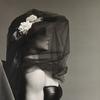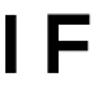'Oh say, can you see?' American flag reimagined in FACTION's new public art project
- NEW YORK, New York
- /
- January 06, 2020
FACTION Art Projects
Oh Say, can you see? Window Installation
Thursday, December 19, 2019 - Thursday, January 9, 2020
Curator-led talk with the artists: Wednesday, January 8, 2020, 5.30 - 7.30pm
2602 Frederick Douglass Blvd, New York, NY 10030, United States
FACTION Art Projects is delighted to present a new public art installation in the windows of Gallery 8, New York. Curated by Natasha Becker, Oh say, can you see? features reimaginings of the American flag by artists Khalil Robert Irving, Sara Rahbar, and Daapo Reo.
Each flag displayed is based on issues the artists are passionate about and each one transforms the iconic stars and stripes into entirely new visions of loss and hope. The diversity of commitments represented in the three artists and their flags suggest some of the unresolved projects of the United States today. The flags critique, deconstruct, reflect the past, mine the present, and envision the future. The artists invite us to stop, to pause, and think together about what’s next.
Khalil Robert Irving’s black and white flag entitled Cortège (Malcolm, Martin) refers to the horrific assassinations and funeral cortèges of Malcolm X and Dr. Martin Luther King, Jr. The bullet-ridden stars in Irving’s “re-makes” of the American flag reflect America’s disregard for the African-Americans who sacrifice daily for the country which they call home. Sarah Rahbar’s flags draw on her Iranian American heritage and transform the American icon into a personal patchwork story, while Daapo Reo’s flags, made from different African textiles weave together sociocultural, economic and political commentaries on the twists and turns that have shaped the world we live in and the experience of being human in the 21st century.
About the artists:
Sara Rahbar is a contemporary artist, born in Tehran in 1976. She left her birthplace during the period of immense upheaval that followed the revolution in Iran and the start of the Iran-Iraq war. While her works had initially explored deeper concepts of nationalism and belonging, her overall artistic practice stems from her personal experience and is largely autobiographical - driven by central ideas of pain, violence and the complexity of the human condition.
Rahbar's work employs various mediums - ranging through photography, sculpture and installation. Compelled by an instinctive obsession to piece together and dissect, her approach is reflective of her need to deconstruct these emotions and apocalyptic memories that have moulded her into the artist and activist she is today.
There is a juxtaposition between the iconographic elements that are ever-present in her work, and the materials that she actively collects. It narrates a dialogue that directly ties to the objects and symbols in which we place faith. Her many compositions form and act as a tangible, physical cacophony of the relationship between individual and society by drawing upon Rahbar’s history and her indignation at the absurdity of organized religion, deception of political regulations, inhumane cruelty towards mankind and animals.
Rahbar has exhibited widely in art institutions including but not limited to Queensland Museum, Sharjah Art Foundation, Venice Biennial, The Centre Pompidou and Mannheimer Kunstverein, and her works are included in the permanent collections of the British Museum, The Centre Pompidou, Queensland Art Gallery, The Davis Museum at Wellesley College, and the Sharjah Art Foundation amongst others. She lives and works in New York.
Daapo Reo is a mixed-media artist whose work mirrors his personal orbit and connective experiences, rendering the substance of storytelling through organic statements of creative versatility. His work probes the frontiers and/or interactions between surface and structure, representation and identity, offering a view into questions of human consciousness, interdependency, and self-transformation.
Reo is a self-taught artist, working in textiles, installation, video, and performance. He has exhibited in Africa, Europe and the United States including, the Goodman Gallery (South Africa), Kinz + Tillou (New York), Galerie Nichido (Japan), Spring Break/Art Show (New York), Labanque (France). He was recently commissioned to present a multi-media textile installation at The SHED (New York). He lives and works in Bushwick, New York.
Kahlil Robert Irving is an artist born in San Diego, California, in 1992, currently living and working in the USA. He attended the Sam Fox School of Design and Visual Art, Washington University in St. Louis (MFA Fellow, 2017) and the Kansas City Art Institute (BFA, Art History and Ceramics, 2015). In 2017, Callicoon Fine Arts mounted his first solo exhibition in New York titled Streets:Chains:Cocktails. Since then, his work has been included in exhibitions at the Nerman Museum of Contemporary Art in Overland Park, Kansas; the Craft and Folk Art Museum, Los Angeles; Thomas Erben Gallery, New York, New York; and St. Louis University, among others. Works by Irving have been included in group exhibitions at the RISD Museum, Rhode Island; Jenkins Johnson Projects, Brooklyn; and Matthew Marks Gallery, Los Angeles. He was an Artist in Residence at Art Omi in summer 2018. Irving’s work is in the collections of the Carnegie Museum of Art, Pittsburgh, Pennsylvania; Nerman Museum of Contemporary Art, Overland Park, Kansas; the Riga Porcelain Museum, Latvia; J.P Morgan Chase Art Collection, New York; The Ken Ferguson Teaching Collection at the Kansas City Art Institute, Kansas City, Missouri; the Foundation for Contemporary Ceramic Art, Kecskemet, Hungary; the RISD Museum, Providence, Rhode Island; and the Whitney Museum of American Art, New York. In 2018, Irving’s first institutional solo exhibition took place at Wesleyan University’s Center for the Arts, Connecticut, and was accompanied by a full-color catalogue with essays and an interview. Irving's work will be featured in Making Knowing: Craft in Art, 1950–2019, upcoming at the Whitney Museum in New York City (November 20, 2019–January 2021).
Natasha Becker is an independent curator and the founding curator of Assembly Room, a women-centered curatorial space in New York. She has spent over 15 years developing exhibitions for artists, curators, and art organizations internationally. As a curator, she imagines and implements new ways for artists, audiences, and organizations to interact, tell stories and create connections. Her recent engagements include, Perilous Bodies and Radical Love (Ford Foundation Center for Social Justice Art Gallery, New York), The Underline Show (Museum of African Art and Design, Johannesburg, South Africa), and Girls Girls Girls (Assembly Room, New York). Originally from Cape Town, South Africa, she lives and works in New York City.
Contact:
Anna BeketovDamson PR
+44 (0)203 981 5200
anna.beketov@damsonpr.com

100x100_c.jpg)






![Peter Paul Rubens (Flemish, 1577–1640), After Titian (Tiziano Vecelli) (Italian [Venetian], c. 1488–1576), Rape of Europa, 1628–29. Oil on canvas, 71 7/8 x 79 3/8 in. Peter Paul Rubens (Flemish, 1577–1640), After Titian (Tiziano Vecelli) (Italian [Venetian], c. 1488–1576), Rape of Europa, 1628–29. Oil on canvas, 71 7/8 x 79 3/8 in.](/images/c/e2/2e/Jan20_Rape_of_Europa100x100_c.jpg)







